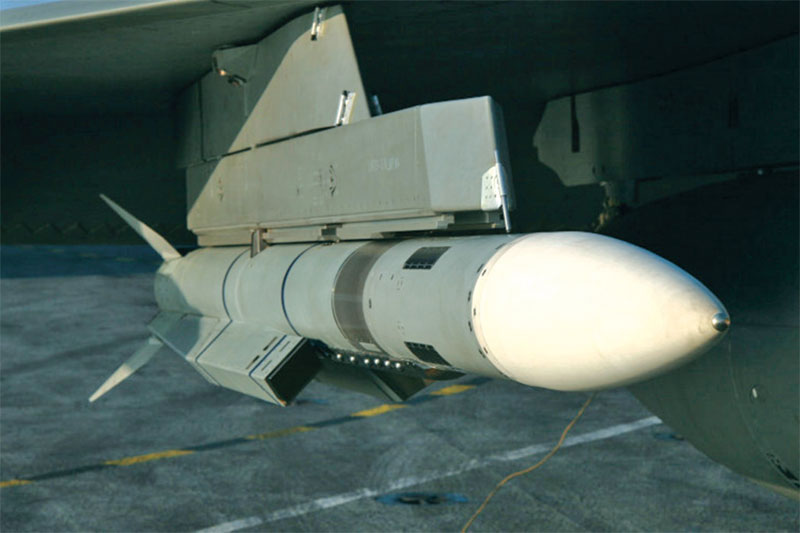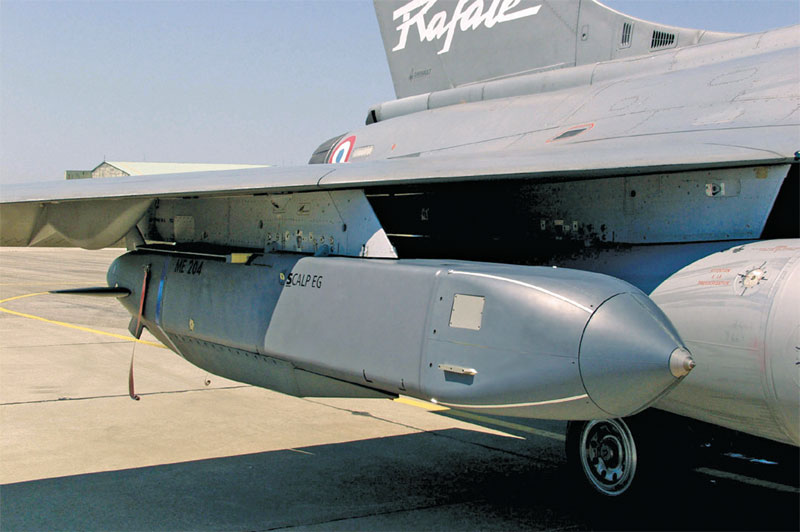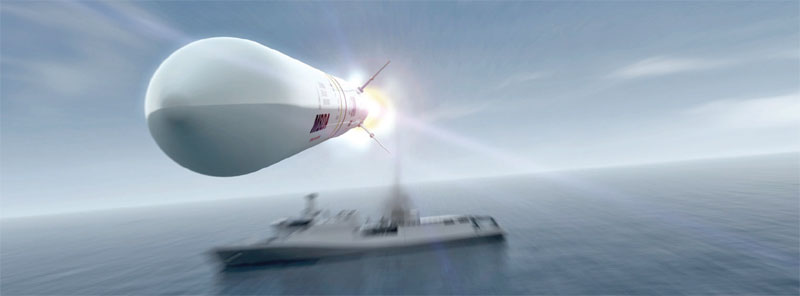A dash across MBDA facilities in UK and France
A FORCE Report
While seemingly ceremonial, the recent visit of French President Emmanuel Marcon as the chief guest at India’s Republic Day celebrations had two significant messages for Delhi.

The geopolitical or ‘global-political’ message was that Paris wanted to further cement the bilateral relationship with Delhi in the Indo-Pacific region. As a major European power, France did not want itself to be subsumed in the US-led Quad comprising two US’ Asian allies (Japan and Australia) besides India. The other message as highlighted in the joint statement was that ‘defence and security partnership has been the cornerstone of the India-France partnership in the Indo-Pacific region.’
While France wants to sell arms to India, the good thing is that it has never applied sanctions or attached conditions on arms sales. Moreover, amongst western nations, France has been most forthcoming in transfer of technology. As part of the disclosed defence roadmap, France will set-up MRO for Rafale engines in India and the Indian DRDO will conclude an MoU with French Directorate General of Armament (DGA) at an early date.
Left unsaid during the visit was the impending purchase of French Rafale-M (Marine) aircraft for Indian Navy’s two aircraft carriers. In December 2023, on India’s asking, France has submitted a letter of acceptance providing details of its offer for 26 Rafale-M aircraft. These aircraft will eventually join the 36 Rafale already in service with the Indian Air Force making India the first foreign nation to operate both versions of the aircraft.
The Rafale-M can carry out a variety of missions like air superiority, interdiction, air-to-ground strikes, close air support, reconnaissance and buddy refuelling. And the European consortium, in which France has a stake, MBDA, is the ideal OEM to provide the arms package for both versions of Rafale. The first MBDA India office representative, Loic Piedevache explained the company’s strengths to FORCE in February 2010 in these words: ‘Our strengths are close relations with India, our advanced technologies, our proven skills to work with partners in both the public and private sectors. In addition, MBDA products have an advantage in that they are developed with specific user requirements in mind and not general global operational needs.’
MDBA’s association with the Indian armed forces started in the Eighties with the Milan anti-tank guided missile programme. While the Milan 2T (with tandem warhead and range of 1,850 meters) was delivered to the Indian Army in 2010, the OEM’s involvement with the IAF is with the Jaguar, Mirage-2000 and Rafale aircraft. MBDA’s MICA missile was operationalized on Mirage-2000 in 2010 and in 2016, the newly inducted Rafale were armed with MICA, Meteor, Scalp and Exocet AM39 missiles. Meanwhile, in 2006 Mistral ATAM was integrated with Rudra helicopter and in 2015, it became part of Prachand (Light Combat Helicopter) too. In 2005, MDBA’s Exocet SM39 missile was integrated with Scorpene class of submarines.
Against this backdrop, FORCE was invited as part of a media group by MBDA to visit its sites in Bolton (UK), and Selles-Saint-Denis and Borgues (France) in November 2023. MBDA opened the Bolton high tech manufacturing facility in 2018. Primarily a production centre, this site is meant for final assembly of Brimstone, Sea Ceptor and Land Ceptor, Meteor, ASRAAM, and SPEAR missiles.

Since the MDBA’s immediate focus on India was on its Sea Ceptor missile which entered service in 2018, a detailed presentation was given on it. Sea Ceptor is the latest generation of all-weather naval air defence system meant to provide local air defence from frigates, corvettes and even ports at supersonic speed up to 25kmph. Sea Ceptor uses the Common Anti-air Modular Missile (CAMM) with the British army for ground-based air defence. The missile systems’ operational advantages are fully active architecture which allows for high rate of fire against multiple simultaneous targets and the ability to defeat saturation attacks; high system performance against naval air target including low-signature targets in high level countermeasure environments; and its ability to engage small high-speed surface craft. Sea Ceptor requires minimal logistics support and maintenance. And its command-and-control system is designed to enable flexible integration with both new and existing naval combat management systems. Moreover, Sea Ceptor can be configured to either operate as an independent single tier air defence capability, or to operate as part of a multitier air defence system.
The MBDA factory in Selles Saint-Denis (it is in the middle of dense forests owing to the hazardous nature of work) takes care of engineering, tooling, manufacturing, testing, assembling and customer service. It also has a demilitarisation facility where missiles that have completed their lifespan are destroyed. Staffed with some 300 people, the facility produces 700 new missiles each year. The missiles produced here include MICA, Storm Shadow (Scalp), Mistral, Exocet, and Aster 15 and 30.
One of the most versatile missiles, MICA in its various configurations can be fired from ships, aircraft as well as ground-based coastal battery. The maritime version is vertical launch (VL), all weather missile with thrust vector control. It has the minimum range of one kilometre and the maximum of 20km. It has two types of seekers, the active RF and the passive IR. In its sea-skimming role it flies at subsonic speed and in higher altitude at supersonic speed. In its air defence role, it can even engage small sized targets like air launched bombs or missiles. It leaves no cloud of dust upon fire because the gasses are ejected upwards through a duct integrated in the canister, hence has low IR signature. It can intercept supersonic cruise missile at the range of 10km, subsonic ones at 15km, guided bombs/missiles at 15km, jet fighters at 15 to 20km, large aircraft and helicopters at 20km and large UAVs at 30kft. According to MBDA, one VL MICA launcher with four missiles can protect an area of 700sqkm.
The latest version of MICA is MICA Next Generation (NG) missile with airborne, GBAD, and NBAD versions. Compared to the previous generation of MICA missiles, the new MICA NG missile is equipped with a new bi-pulse motor that doubles the interception range. This system offers a very high single shot kill probability and simultaneous multiple shot capability: autonomous guidance and extremely high firing rate. VL MICA NG also has many operational advantages, such as low maintenance, reduced manpower requirements and very long service life. While expected to be operationalized by 2025, MICA NG has been offered to India for both Rafale and Rafale-M.

Meanwhile, the Scalp/Storm Shadow is a high precision, long range, stealth cruise missile with turbojet propulsion and imaging IR sensor, inertial measurement unit with TRN and GPS. It has automatic target recognition with metric precision. The missile has the range of over 250km and flies at the speed of 0.8 mach. According to MBDA, the Scalp missile has been upgraded to provide the naval version with over 1,000km range when launched from submarine. The missile remains subsonic before taking to the skies to hit the potential target on ground. It has been offered under the ‘Make in India’ for the Scorpene submarines programme. In addition to the missiles, missile counter measure like FLIR and jammers are tested at the MBDA facility. Moreover, missiles are tested here with helicopters and UAVs.
Exocet, which is one of the most successful MBDA missiles are produced here. The Exocet family comprising Exocet AM 39, MM 38, SM 39 and MM 40 Block 3 (with range of 180km) has 35 customers worldwide, with India being one of them. India has contracted for Exocet SM 39 as part of the Scorpene package. SM 39 can fire from great depth and not mere periscope depth. Exocet MM 40 Block 3 is the latest ship-launch missile with fire-and-forget qualities. Called a true sea-skimmer, it has both anti-ship and coastal attack capability. Exocet AM 39 is the air launched version currently employed on Rafale fighter. With the range of 70km, it is credited to being a real self-adapted sea skimming missile and is being offered to the IAF on Rafale as part of MRFA competition. It is also being offered to the navy on Sea King helicopters.
That Aster is the pride of MBDA is evident from the life-size model of the missile outside the corporate office in Paris. Flying at the speed of 1,400m per second, Aster can hit the target at the minimum range of three km and the maximum range of 120km. It has a dual mode warhead which can engage both the aircraft as well as ballistic missile with high accuracy complimented by inertial mid-course guidance. Eight missiles can be fired in seven seconds and one troop of four launchers with eight missiles each can hit 32 targets. It has a multi-functional, tri-dimensional radar that also enables identification of friend and foe.
Meanwhile, established in 2014, MBDA Bourges facility is close to Selles-Saint-Denis and some 300km from Paris. It is an engineering centre with facilities for electronic design, mechanical design, software development, and propulsion studies and testing for the entire range of MBDA products for air dominance, battlefield engagement, ground-based air defence, and maritime superiority.
The missile-making process at Bourges starts with the raw materials–aluminium and stainless steel which come in the round or square forms depending upon the need. They are machined, forged and welded according to the design. Certain raw materials are put through a flow forming machine where without chipping at the substance, the metal is moulded to the desired shape, like pottery. This state-of-the-art machine, which is MBDA’s pride yields funnels, elongated tubes and other shapes in perfect symmetry that go in the structure of the missile. Another unit deals with Titanium and yet another works on composites. According to the escort who was explaining various processes with infectious enthusiasm, “We use the combination of Aluminium, Titanium, stainless steel and composites depending upon the role of the missiles.”
The high-security factories do not get too many visitors as each visit implies loss of man-hours of work. According to the company rules, all work stops whenever there are visitors, except in certain sections of machining and tooling, for the risk of accidents.
As a world leader in missile systems across domains, MBDA is well poised to meet Indian requirements of all the three services. It’s joint venture with L&T offers an opportunity for upskilling and developing indigenous capabilities. It would be a pity if we fail to take advantage of that.

